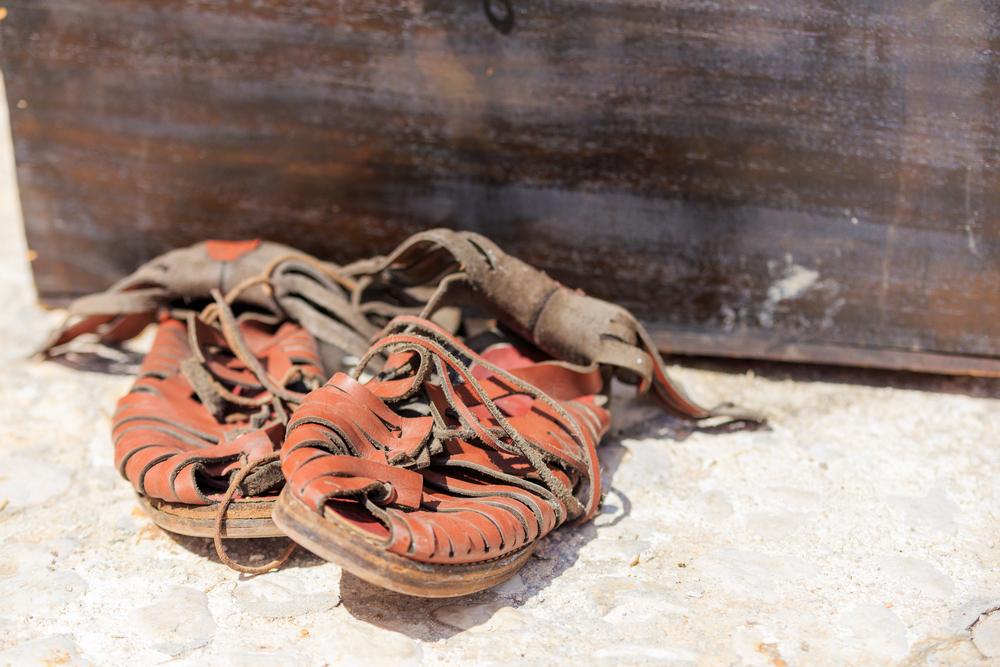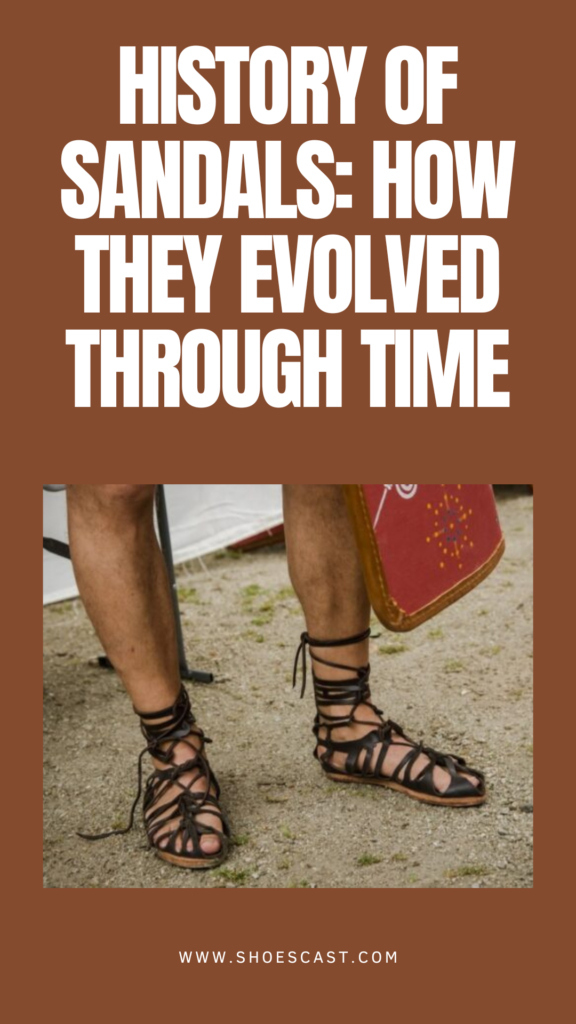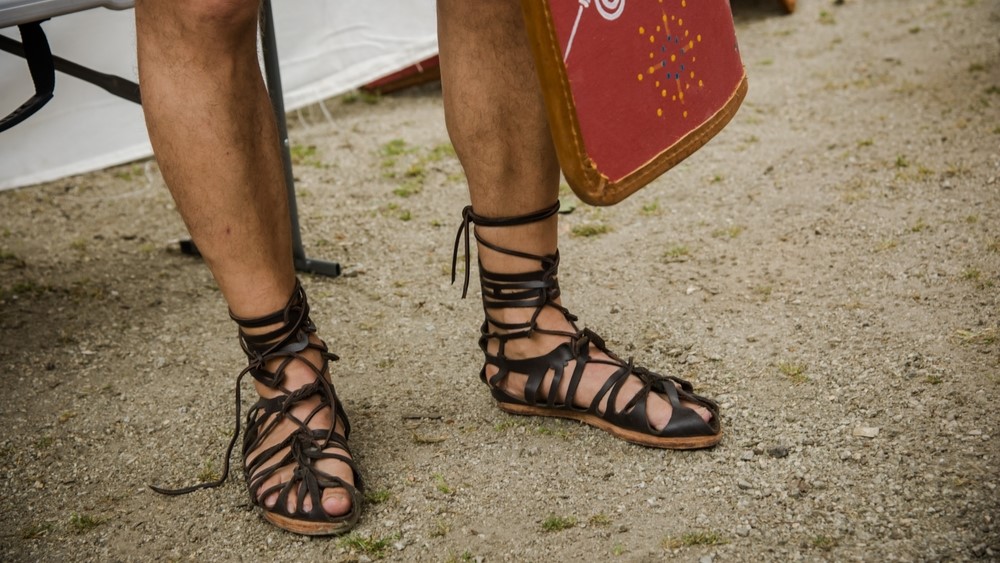Today, sandals are worn by everyone and anyone, but it hasn’t always been like that. The history of sandals is a long one, as they appeared back in ancient times.
Modern sandals are real summer staples. As soon as the weather gets hot enough, you pull your favorite pair out of the closet and keep on wearing them until your feet can’t take it anymore.
They’re the real witnesses of chill summer nights, days at the beach, and pool parties. So, your sandals have probably been through a lot – and if they could talk, they’d have so much to tell.
But where were they created? And why did people start wearing them? Were they available to everyone, or did you have to be a person of status in order to wear them?
If you’re interested in the history of things that surround you and that you can’t imagine a life without, keep on reading. Let’s find out more about this classic pair of footwear.
The origin and history of sandals

It is believed that sandals first became popular in areas with warmer climates. This makes total sense, as people needed some kind of protection from crazy hot sand and rocks. So, they needed to come up with a solution that would allow their feet to breathe, while still being protective enough.
So, it doesn’t come as a surprise that sandals were the oldest known items of footwear.
10,900 years back, sandals made out of woven sagebrush bark were found on a site in the modern U.S. state of Oregon. It’s probable that many different pre-historic cultures developed sandals independently at around the same time. They all needed some kind of protection for their feet, and simple sandals offered an effective solution.
When it comes to Ancient times, Egyptians, Greeks, and Romans were also fans of sandals.
In Egypt, sandals were a symbol of the elite. They were made out of papyrus and palm leaves. But, in the beginning, not many people wore them. They belonged to the higher classes and were a symbol of the pharaoh’s sovereignty.
However, as time went by, even regular people were allowed to wear them. So, by the period of Roman occupation, everyone was wearing sandals.
Greeks were also fans of sandals due to their warm and dry climate. The Greek god Hermes is often portrayed wearing winged sandals.
However, the proof that Greeks wore these pieces of footwear only lies in the notes and descriptions they had made, since no archeological examples have been found.
But from their descriptions, it’s safe to say they had many different designs and each one of them had a corresponding name. It’s also clear that they had strict rules on who could wear which sandals and when was the appropriate time for them.
When it comes to Romans, they also followed similar rules as Greeks. Only certain societal ranks were allowed to wear certain styles of sandals. This goes to prove how important these shoes were in Ancient times. They were related to the status of the citizens.
With the rise of Christianity, sandals started to lose their popularity. Early church leaders believed that sandals were too simple and exposed. Because of them, women’s feet were portrayed as naked, which was intolerable.
The arrival of modern sandals

After the French Revolution, fashion-conscious women started wearing sandals. Following this moment, these famous pieces of footwear went through various changes and adjustments.
At first, they were similar to models that Greeks and Romans used to wear. After that, a closed-shoe style became popular, and even though they technically weren’t sandals, they were inspired by sandals and went by the name “sandal-slippers.”
Years went by, and different designs were made, but they all included a closed-toe during the strict rules of propriety. It was only during the late 1920s that women started wearing low-heeled sandals made of wide leather or cotton straps. But the reason this was possible was because the majority of the shoe was covered by long, wide pants.
After that, sandals quickly evolved and changed, based on the needs and available materials.
By the late 1930s, they came in different styles, depending on the time of the day. After World War II, sandals were made out of twisted and woven fibers due to the shortage of leather. In the 1950s, they were made with simple straps to give an illusion of bare feet.
After that, the world of sandals evolved even further, with many new models designed. People started wearing them for different reasons – some for fashion purposes, while others for health reasons.
Around the 1970s, Birkenstocks were born, and we could say that they started a whole new trend where even men started wearing sandals on a daily basis. This is when sandals were finally celebrated in their full glory.
Today, sandals come in even more designs, and you can easily find a pair that works for you. It doesn’t matter if you intend to wear them for fashion reasons or because you’re suffering from a certain foot condition, the overflowing market allows you to find exactly what you’re looking for.
Their simple design is perfect for sunny days when you don’t feel like wearing sneakers due to the high temperatures. Sandals allow your feet to breathe, but at the same time, they protect you from sizzling hot surfaces.
They’re made with different materials, be it eco-friendly sandals or waterproof ones perfect for days at the beach.
Easy to slip on and off, sandals are definitely here to stay, and their long history proves that. If anything, their popularity will only grow from here, and we can only imagine how far they’ll go.
Imagine all the futuristic designs that we’ll get to witness in the near future. We’re sure there’s plenty to come, but even if that doesn’t happen and today’s version of sandals remains forever, we’re sure they will be worn by future generations. What’s not to adore, right?


